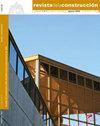模拟预制梁-柱与斜拉杆连接循环性能研究
IF 1.4
4区 工程技术
引用次数: 0
摘要
本研究的目的是研究在准静态反循环荷载下,由灌浆钢钉杆和现浇混凝土建造的模拟预制梁柱连接的外部和内部类型的抗震性能。预制结构元件之间的销钉连接是通过将销钉插入柱梁的孔和梁的预制部分来实现的。为了确保销钉杆的锚固,在这些孔中填充无收缩灌浆,然后在接缝核心和预制梁的整个上部进行现浇混凝土。过去,特别是2012年5月意大利艾米利亚-罗马纳地区地震后(Ercolino, Magliulo, & Manfredi, 2016),预制钢筋混凝土结构的破坏更容易发生在预制梁柱节点段。因此,必须提高梁柱节点的性能,以承受所有可能的横向荷载组合,这将包括在预制结构部件的设计和详细说明中。本研究使用Staad对一座八层钢筋混凝土框架建筑进行地震荷载分析。专业软件。采用Staad计算的设计力和弯矩,设计并详细说明了建议的梁柱连接的外部和内部类型。Pro分析,符合印度标准代码(IS 456,2000), (IS 1893, 2016)和(IS 13920, 2016)。采用整体式(MBC-EJ & MBC-IJ)和模拟梁柱(EBC-EJ & EBC-IJ)内外节点三分之一按比例缩小的试件,研究了拟静力循环荷载作用下梁柱节点的性能。在这种模拟连接中,预制构件之间的结构连续性和相容性通过带销钉杆的钢梁和现浇混凝土实现。根据得到的荷载-位移滞回关系,确定试件的极限和屈服承载能力、耗能能力、刚度退化和延性参数。结果表明,预制外缝试件(EBC-EJ)的延性比整体外缝试件(MBC-EJ)高14.36%,耗能比整体外缝试件(MBC-EJ)高13.23%。同样,预制内缝试件(EBC-IJ)的延性比整体式内缝试件(MBC-IJ)高6.27%,耗能比整体式内缝试件(MBC-IJ)高16.86%。因此,试验结果证实,在节点区域使用灌浆销杆和湿混凝土可以提高刚度和结构连续性,并将预制连接的极限强度提高到与典型的整体梁柱节点非常接近的水平。本文章由计算机程序翻译,如有差异,请以英文原文为准。
Cyclic performance of emulative precast beam to column con-nection with corbel using dowel bar
The objective of this study is to examine the seismic performance of exterior and interior types of an emulative precast beam to column connection, constructed with grouted steel dowel bar and cast-in-situ concrete under quasi-static reversed cyclic loading. The dowel bar connection between the precast structural elements is achieved by inserting the dowel bar into the column corbel's holes and the precast portion of the beam. To secure the dowel bar's anchorage, these holes are packed with non-shrinkage grout and then cast-in-situ concreting is done in the joint core and the entire upper segment of the precast beam. In the past, particularly after an earthquake in the Emilia-Romagna region of Italy in May 2012 (Ercolino, Magliulo, & Manfredi, 2016), witnessed damage to precast reinforced concrete structures was more likely to occur in the precast beam-column joint section. Hence, it’s essential to improve the performance of the beam-column joint to withstand all possible lateral load combinations, which are to be included in the design and detailing of the precast structural components. This study analyzed an eight-story RC frame building for earthquake loading using Staad.Pro software. The exterior and interior types of proposed beam-column connections were designed and detailed using the design forces and moments computed by the Staad.Pro analysis, in accordance with the Indian standard codes (IS 456, 2000), (IS 1893, 2016)and (IS 13920, 2016). The beam-column joint behavior under quasi-static cyclic loading was studied using one-third scaled-down test specimens, i.e., monolithic (MBC-EJ & MBC-IJ) and emulative beam-column (EBC-EJ & EBC-IJ) exterior and interior joints. In that proposed emulative connection, the structural continuity and compatibility between the precast elements were achieved through the corbel with the dowel bar and cast-in-situ concreting. The test specimen’s ultimate and yield load carrying capacity, energy dissipation capacity, stiffness degradation, and ductility parameters were determined based on the obtained load-displacement hysteresis relationship. Based on the findings, the precast exterior joint specimens (EBC-EJ) were found to be 14.36% more ductile and 13.23% more energy dissipative than monolithic exterior joint specimens (MBC-EJ). Similarly, precast interior joint specimens (EBC-IJ) outperformed monolithic interior joint specimens (MBC-IJ) by 6.27% more ductility and 16.86% more energy dissipation. Therefore, the experimental results confirmed that using grouted dowel bars and wet concreting in the joint area enhances rigidity and structural continuity, as well as improves the ultimate strength of precast connections to a level that closely resembles typical monolithic beam-column joints.
求助全文
通过发布文献求助,成功后即可免费获取论文全文。
去求助
来源期刊

Revista de la Construccion
工程技术-工程:土木
CiteScore
2.30
自引率
21.40%
发文量
0
期刊介绍:
The Journal of Construction is aimed at professionals, constructors, academics, researchers, companies, architects, engineers, and anyone who wishes to expand and update their knowledge about construction. We therefore invite all researchers, academics, and professionals to send their contributions for assessment and possible publication in this journal. The publications are free of publication charges.
OBJECTIVES
The objectives of the Journal of Construction are:
1. To disseminate new knowledge in all areas related to construction (Building, Civil Works, Materials, Business, Education, etc.).
2. To provide professionals in the area with material for discussion to refresh and update their knowledge.
3. To disseminate new applied technologies in construction nationally and internationally.
4. To provide national and foreign academics with an internationally endorsed medium in which to share their knowledge and debate the topics raised.
 求助内容:
求助内容: 应助结果提醒方式:
应助结果提醒方式:


